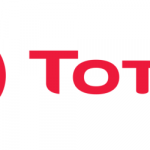Inside Big Tech’s High-Stakes Race to Quantum Supremacy

(Wired.co.uk) For the last ten years, some of the world’s biggest companies – Google, Amazon, Microsoft, IBM – have been racing to be the first to create a working, practically useful quantum computer.
Artur Ekert, a professor of quantum physics at the University of Oxford gave a talk to the 1994 International Conference on Atomic Physics in Boulder, Colorado, that was the starting gun in today’s quantum race. For the first time, he broke down quantum computation into its basic building blocks, drawing parallels with classical devices and describing the types of switches and logic gates that would be needed to build a quantum machine. “This meeting started the whole avalanche,” he says. “All of a sudden the computer scientists were talking about algorithms; atomic physicists saw that they could play a role. Later it started spilling over into other fields, it started accelerating, and it became the industry you see today.”
There are different approaches to quantum computing – qubits have been suspended in laser beams, trapped in diamonds, and inferred from the aggregate magnetic alignment of billions of particles in a machine that works like an MRI scanner. Some routes offer a gentle starting slope before accelerating in difficulty, while others – such as superconducting qubits – have a steep initial learning curve, but promise to be easier to scale up to the thousands or millions of qubits we’ll eventually need to solve real-world problems.
superconducting qubits are currently preferred by most of the major players – including Google and IBM – because they mesh more neatly with the silicon-based architecture inside almost every classical computer on the planet. “This approach – superconducting qubits – has always been looked at as being the closest analogue to the classical integrated circuit that powers our lives.
Over the last decade, we’ve seen an escalating race in the number of qubits being claimed by different companies. In 2016, Google simulated a hydrogen molecule with a nine-qubit quantum computer. In 2017, Intel reached 17 qubits, and IBM built a 50-qubit chip that could maintain its quantum state for 90 microseconds. In 2018, Google unveiled Bristlecone, its 72-qubit processor, and in 2019 IBM launched its first commercial quantum computer – the 20-qubit IBM Q System One.
D-Wave, a Canada-based company, has always been an outlier. It has been selling commercial quantum computers since the late 1990s, and claims to have several thousand “annealing qubits” in its devices, but these are based on a different theoretical approach.
If Google’s ascent up the quantum mountain is steep, Microsoft’s is potentially impossible. Instead of superconducting qubits, they’re trying to harness a different type of qubit known as a “topological qubit”. The only problem is that it might not actually exist.
Instead of quantum supremacy, Microsoft and IBM now prefer to talk about “quantum advantage” – the point at which quantum computers allow you to do useful things that you couldn’t do before.
Ekert, whose talk in 1994 kickstarted the race to quantum supremacy, thinks we’ll still need some major technological breakthrough akin to the development of the transistor, which transformed conventional computers from the 1960s onwards.





















